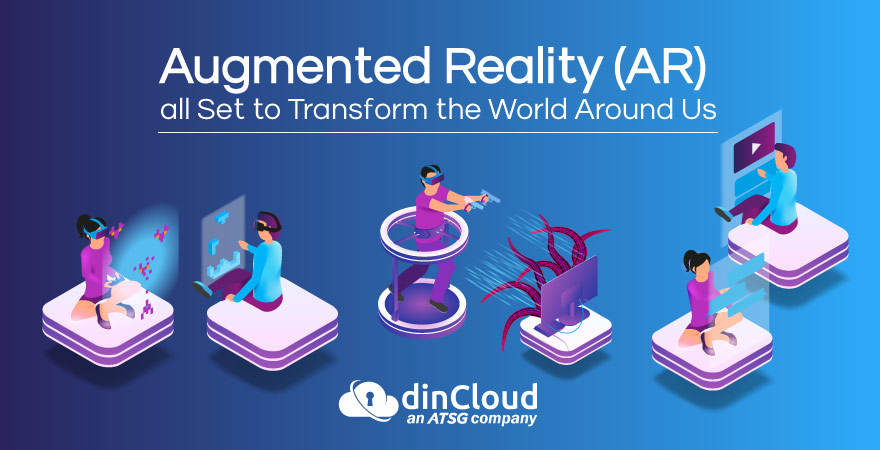Do you remember your favorite science fiction movie in which one of the characters was flying a whole space ship by making various gestures in thin air, well this is a very suitable analogy with the concept of Augmented Reality (AR).
Augmented Reality (AR) is a rapidly emerging technology that is interactive, as it has the ability to superimpose a digital world over our real world. When you fully grasp this concept, you will be able to realize the plethora of possible use cases.

Pandemic Catalyzes AR Growth
Like many other digital technologies around us, the Covid-19 pandemic acted as a major catalyst for the rapid development of AR. According to research company Markets and Markets, AR is expected to become a US $72 Billion technology by the year 2024.
This is a huge figure for any emerging technology, especially in the backdrop of the prevailing global pandemic and the financial turmoil it has brought along. Interestingly, this health crisis has worked in favor of AR by accelerating Research and Development (R&D).
Related: Cloud Powered Augmented Reality (AR) – A True Game Changer
In this post, we will also discuss some of the major day to day use cases for Augmented Reality (AR), as they hold the potential to make it a mainstream technology very soon.
Education
The pandemic has completely transformed the mediums for imparting education. What largely used to be a person to person interaction has now become a remote activity. However, traditional distance learning is proving challenging and boring for students.
By including AR into the teaching process, the faculty members will be able to interact with remote students at a whole new level. AR will also make the practical demonstration of certain phenomenon much easier for teachers in the absence of classrooms or labs.
Related: How Digital Channels and Augmented Reality (AR) are Transforming Auto Sales?
Training
Employee training is a very costly undertaking, and it tends to be a constant process as well. Recent studies have found that by leveraging AR in the training process, this otherwise dull exercise becomes a whole lot more engaging and inclusive.
With AR, enterprises will mostly need to invest in a good trainer and employee training program once. With a good training blueprint that is powered by AR, organizations will be able to make training engaging and enjoyable for employees, instead of a burden.
It should not come as a surprise that some of the world’s leading organizations that include names like Boeing, Mercedes Benz and National Aeronautics and Space Administration (NASA) are extensively using AR to improve their employee training programs.
Augmented Reality (AR) has the unique capability of generating almost real life training scenarios for employees, whether it’s their surrounding environment or the process itself, for which an employee is being trained beforehand.
Related: How Are Cloud Technologies Enabling Hybrid Work and Remote Collaboration?
By deploying AR extensively into the employee training process, enterprises will be able to make the training process safe, cost efficient, engaging and fun. This in turn will better prepare employees for the actual scenarios where this training comes into play.
Healthcare
The healthcare industry has undergone tremendous evolution over the past months. It should not come as a surprise that AR is also being used extensively in the healthcare industry. Nurses are using AR powered apps to easily locate a patient’s vein.
AR is also coming in really handy when training and preparing surgeons for complex invasive procedures. Some AR tools also have the capability to assist surgeons in real-time, while a sensitive medical procedure is being performed.
Related: GPU Cloud Computing Market Set for Growth b/w 2022 & 2028
Conclusion
There are no two opinions about the efficacy of Augmented Reality (AR) in a wide range of scenarios. However, the various facets of this technology clearly indicate it is an expensive one, and is also very resource intensive.
This resource gap is effectively filled by the limitless storage, compute and processing muscle of the Cloud. By combining the capabilities of AR with the flexibility and scalability of the Cloud, AR can be made a viable technology for small to mid sized entities as well.
In the days, weeks and months to come, we will witness a very synergetic combination between Cloud Computing and Augmented Reality (AR). This in turn will impact the lives of millions around us in a very positive manner.
In case you are interested in reliable and secure Cloud Computing solutions, dinCloud has a wide range of these for your enterprise needs.


